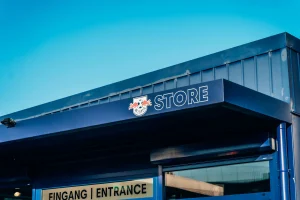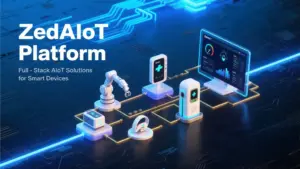Why Retail Store Security Systems Must Go Smart in 2025 – And How ZedIoT Delivers It
Traditional retail security setups are often fragmented—separate cameras, disconnected alarms, and no centralized visibility. This is where retail store security systems need to evolve.
Powered by AI surveillance, smart sensors, and real-time analytics, ZedIoT delivers an integrated solution that protects assets, improves visibility, and adapts to multi-store operations.
In this article, we’ll explore how smart security works in modern retail, why unified systems matter, and how ZedIoT’s platform helps you build a safer, smarter store network.
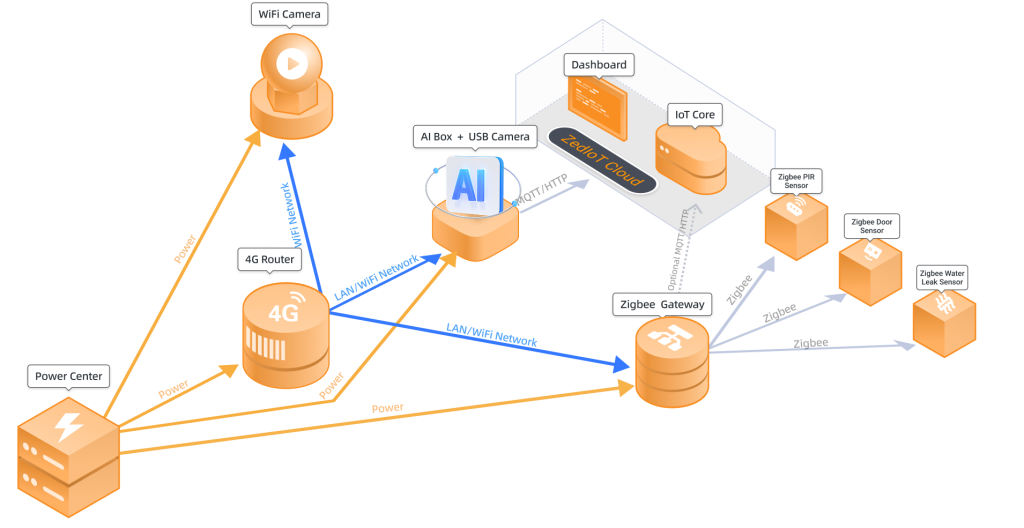
Key Smart Store Features:
- AI-powered store security cameras
- Real-time gas leak detection solutions
- Centralized multi-location monitoring
- Remote alerts and predictive maintenance
From "gas leak alerts" and "real-time energy analytics" to "AI surveillance integration," smart retail is no longer a futuristic idea but a deployable, system-level upgrade.
What Is Smart Retail Store Management – From Security to Energy Efficiency
Smart retail store management involves integrating technologies such as IoT, AI, and cloud computing into store operations to enable real-time sensing, intelligent processing, and responsive actions.
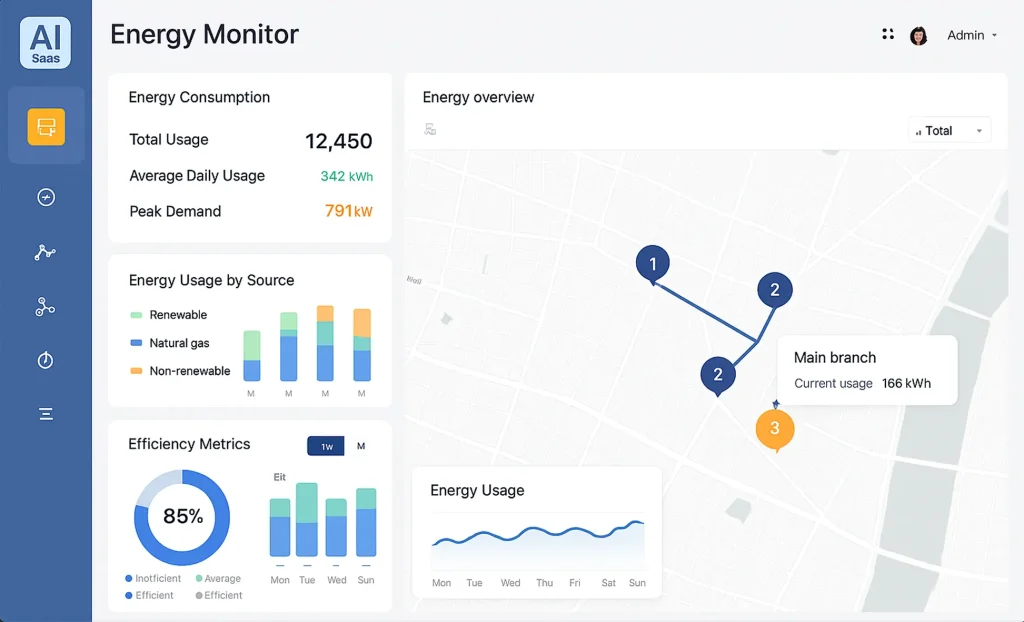
Core features include:
- Video surveillance with AI detection (human shape, abnormal behavior, mask recognition, etc.)
- Energy usage monitoring and optimization
- Fire and combustible gas detection
- Environmental controls for temperature, humidity, and air quality
- Foot traffic analysis and staff behavior monitoring
- Remote mobile management and alert notifications
Internationally, the following terms are often used for this concept:
- Smart Retail / Smart Store
- Connected Store
- Store Operations Management
- Retail IoT Platform
- Multi-site Retail Monitoring

Inside the ZedIoT Platform: AIoT Architecture for Retail Security & Control
Here is a typical system structure diagram for a smart retail IoT platform:
flowchart LR %% Sensing Layer A["Store Sensing Devices"]:::sense B1["AI Camera"]:::cam B2["Energy Meter"]:::meter B3["Smoke/Gas Sensor"]:::env B4["Temperature/Humidity/Noise Monitor"]:::env %% Edge Layer C["Local Gateway / Edge Computing Node"]:::edge %% Cloud Layer D["Cloud Platform(Retail IoT Management)"]:::cloud %% Application Layer E1["Store Operations Console"]:::app E2["Centralized HQ Backend"]:::app E3["Automated Alert Linkage System"]:::app %% Main Flow A --> B1 A --> B2 A --> B3 A --> B4 B1 --> C B2 --> C B3 --> C B4 --> C C --> D D --> E1 D --> E2 D --> E3 %% Layer Styles classDef sense fill:#e3f2fd,stroke:#42a5f5,stroke-width:2px,color:#1565c0,rounded:10px classDef cam fill:#ffe082,stroke:#ffb300,stroke-width:2px,color:#e65100,rounded:10px classDef meter fill:#a5d6a7,stroke:#388e3c,stroke-width:2px,color:#1b5e20,rounded:10px classDef env fill:#ffccbc,stroke:#ff7043,stroke-width:2px,color:#4e342e,rounded:10px classDef edge fill:#b2ebf2,stroke:#00bcd4,stroke-width:2px,color:#006064,rounded:10px classDef cloud fill:#ede7f6,stroke:#7e57c2,stroke-width:2px,color:#4527a0,rounded:10px classDef app fill:#fff59d,stroke:#fbc02d,stroke-width:2px,color:#6d4c00,rounded:10px

Smart Store Security in Action: Common Scenarios & ZedIoT Solutions
AI surveillance and store security cameras
- Pain Point: Traditional cameras only record; no real-time recognition or decision-making
- Solution: Install AI-enabled cameras that detect human presence, loitering, crowding, and intrusions
- Key Technology: On-device AI inference or cloud-based video analysis
Store Alarm System for Intrusion, Fire, and Gas Detection
- Pain Point: Kitchens, storage areas, and power rooms pose high fire/gas risks
- Solution: Use smoke, CO, and CH4 sensors connected to auto power cut-off and real-time app alerts
- Devices: WiFi/Zigbee gas detectors, scene automation through platform settings
Energy Analysis & Efficiency Optimization
- Pain Point: ACs left on, lights always on, hidden high-energy devices
- Solution: Multi-circuit energy meters + area-based energy data + abnormal alerts
- Platform Features: Periodic reports, trend charts, AI-based efficiency suggestions
| Device Type | Function | Protocol Support |
|---|---|---|
| Smart Energy Meter | Zone power monitoring, peak analysis | Modbus, WiFi |
| Smart Gas Sensor | Detects flammable gas/CO | Zigbee, WiFi |
| AI Camera | Human detection, traffic analysis | RTSP + AI SDK |
| Smart Thermostat | HVAC zone control, remote adjustments | Zigbee, BLE |

Managing Multi-Store Security with ZedIoT’s Unified Monitoring Platform
For retail chains, managing one store well isn’t enough. A scalable, repeatable smart store system should meet these core requirements:
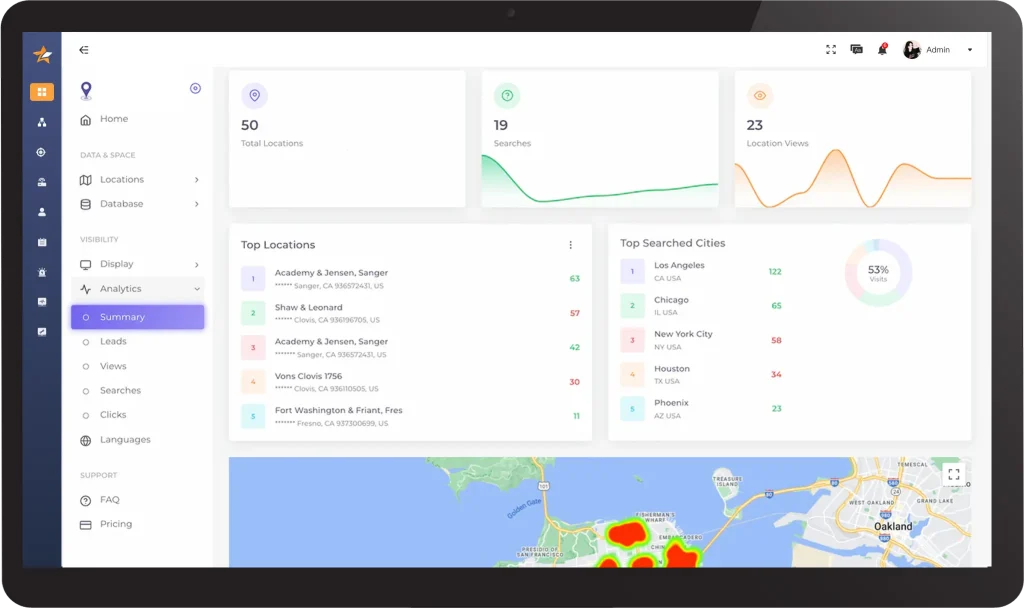
✅ Centralized Cloud Management
- HQ can monitor device and alert status across all stores remotely
- View energy trends, surveillance feeds, and foot traffic per store
- Create unified or customized strategy templates per store type
✅ Multi-store Grouping & Role Management
- Group stores by region, brand, or type
- Define user roles like HQ admin, regional manager, store manager
- Support multi-language UI and cross-border deployment
✅ Data Integration Capabilities
- Sync IoT data to private clouds or data lakes (e.g., AWS S3, Alibaba OSS)
- Integrate with CRM/ERP/HR systems for cross-analysis (traffic-sales-ops)
Example: Heatmaps from AI cameras combined with POS data help analyze which shelves drive sales and which promotions underperform.
How Retailers Use Security Systems: 2 Implementation Cases
Case 1: Fashion Chain in Southeast Asia
- Problem: ACs run constantly, poor camera coverage, manual security reporting
- Solutions:
- Installed smart meters + motion sensors for auto shut-off when no one is present
- AI cameras for human detection and loitering alerts
- Smoke/gas sensors connected to HQ via cloud alerts
Results:
- 28% reduction in energy usage in 6 months
- 42% faster abnormal response time
Case 2: Large Supermarket Group in Europe
- Problem: Cold chain failures led to food spoilage; no gas leak warnings in the kitchen
- Solutions:
- Installed smart fridge temp monitors linked to cloud AI models for trend prediction
- Kitchen CH4/CO sensors triggered alerts via voice + SMS + App
- Used Jetson Nano for on-site learning models to detect HVAC anomalies
Results:
- Saved €430,000 per year in cold chain losses
- 95% drop in gas-related failures

Deployment Roadmap: Launching Your Retail Security System with ZedIoT
Building a smart store is more than buying devices and installing apps. It’s a phased, measurable process:
✅ Step 1: Assess Current Setup & Define Goals
- Survey store size, layout, and type
- Prioritize goals: Energy? Security? Staff efficiency?
✅ Step 2: Device & Protocol Planning
- Choose the right protocol (WiFi/Zigbee/LoRaWAN) based on wiring conditions
- Evaluate how many devices need on-site AI to decide gateway specs
✅ Step 3: Define AI Capabilities
- Need voice/image recognition or multi-turn conversation?
- Decide between edge AI (e.g., YOLOv8, DeepSeek) or cloud models
✅ Step 4: Platform & System Integration
- Enable centralized cloud dashboard with map view and multi-user support
- Connect with existing SaaS like POS, CRM
✅ Step 5: Pilot Deployment & Tuning
- Choose 1–3 pilot stores
- Roll out modules in phases: energy, security, staff monitoring
✅ Step 6: Optimize & Measure ROI
- Compare device data with sales/operations performance
- Add predictive maintenance and behavior analysis features
ROI & KPIs of Smart Retail Security Systems
Here’s the typical ROI timeline for smart store IoT projects:
| Use Case | ROI Timeline | Key Benefits |
|---|---|---|
| Smart Energy Management | 6–8 months | Reduced kWh, lower energy costs |
| Fire/Gas Detection | Immediate | Risk reduction, insurance savings |
| AI surveillance | 3–5 months | Theft reduction, faster security |
| Predictive Maintenance | 8–12 months | Less downtime, longer equipment life |
| Traffic + Sales Linking | 4–6 months | Better conversion, shelf optimization |
Why Connected Stores Need Connected Security – ZedIoT’s Vision
Modern stores are no longer just sales spaces. They are hubs for operations, interaction, sensing, and data. Smart store construction improves efficiency and gives HQ complete data for decision-making.
Connected Store is the future of retail—it’s a must-have, not a nice-to-have.
Whether you're a regional chain or a global brand, building smart capabilities—even in one store—can give you a competitive edge tomorrow.
Explore ZedIoT Retail Security Solutions – Start Smarter Today
If you're a:
- Retail executive
- Systems integrator
- IoT platform provider
We offer:
- Smart store assessment services
- Custom AI modules and hardware
- Centralized deployment plans for multi-store operations
- Toolkits for cloud + edge integration
As retail security challenges grow, it’s no longer enough to rely on fragmented tools.
ZedIoT’s unified platform turns retail store security systems into smart, scalable solutions—combining cameras, sensors, and alarm systems into one AIoT-powered stack.
Explore our full platform to see how we help multi-location retailers secure their operations, reduce losses, and scale with ease.
Retail Store Security Systems: FAQs about Smart Cameras, Alarms & Deployment
1. What is a retail store security system?
It’s a combination of surveillance cameras, alarms, and sensors designed to monitor and protect retail environments. Modern systems are cloud-based and AI-powered for real-time insights.
2. How does AI surveillance work in retail?
AI surveillance analyzes video feeds to detect suspicious behavior, reduce false alarms, and enable faster security response. It’s used in theft prevention and operational analytics.
3. What’s included in a smart store alarm system?
A smart alarm system includes gas leak detectors, smoke alarms, intrusion sensors, and remote alerting, often managed via cloud platforms like ZedIoT.
4. Can retail security systems be used across multiple store locations?
Yes. Platforms like ZedIoT offer centralized control for multi-store retailers, enabling consistent monitoring and deployment.
5. What’s the ROI of implementing smart store security systems?
Most retailers see ROI within 3–6 months through energy savings, reduced theft, and faster incident response. Predictive maintenance also lowers downtime and repair costs.
6. How fast can I deploy a smart retail security system?
With ZedIoT’s plug-and-play architecture, retailers can deploy security systems in days, not weeks—without complex installations.
